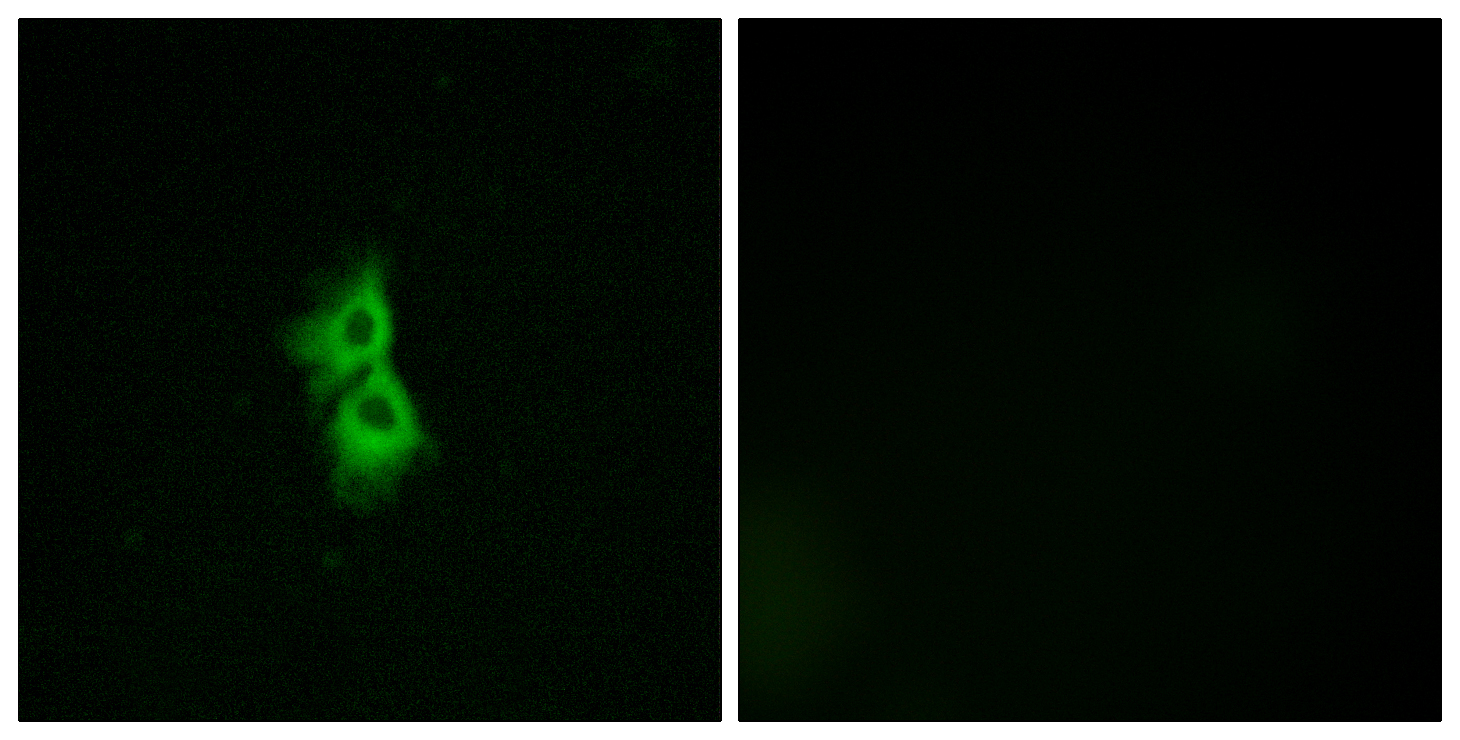GPR22 Polyclonal Antibody
- Catalog No.:YT2009
- Applications:IF;ELISA
- Reactivity:Human;Mouse
- Target:
- GPR22
- Gene Name:
- GPR22
- Protein Name:
- Probable G-protein coupled receptor 22
- Human Gene Id:
- 2845
- Human Swiss Prot No:
- Q99680
- Mouse Gene Id:
- 73010
- Mouse Swiss Prot No:
- Q8BZL4
- Immunogen:
- The antiserum was produced against synthesized peptide derived from human GPR22. AA range:271-320
- Specificity:
- GPR22 Polyclonal Antibody detects endogenous levels of GPR22 protein.
- Formulation:
- Liquid in PBS containing 50% glycerol, 0.5% BSA and 0.02% sodium azide.
- Source:
- Polyclonal, Rabbit,IgG
- Dilution:
- IF 1:200 - 1:1000. ELISA: 1:5000. Not yet tested in other applications.
- Purification:
- The antibody was affinity-purified from rabbit antiserum by affinity-chromatography using epitope-specific immunogen.
- Concentration:
- 1 mg/ml
- Storage Stability:
- -15°C to -25°C/1 year(Do not lower than -25°C)
- Other Name:
- GPR22;Probable G-protein coupled receptor 22
- Molecular Weight(Da):
- 49kD
- Background:
- This gene is a member of the G-protein coupled receptor 1 family and encodes a multi-pass membrane protein. [provided by RefSeq, Jul 2008],
- Function:
- function:Orphan receptor.,similarity:Belongs to the G-protein coupled receptor 1 family.,tissue specificity:In the brain regions frontal cortex, caudate, putamen and thalamus; not in pons, hypothalamus and hippocampus.,
- Subcellular Location:
- Cell membrane ; Multi-pass membrane protein .
- Expression:
- High expression in adult and fetal heart tissue (PubMed:18539757). Expressed in the brain, with enrichment in the accumbens, amygdala, cerebellum, cortex, and hippocampus regions (PubMed:9073069, PubMed:18539757).
- June 19-2018
- WESTERN IMMUNOBLOTTING PROTOCOL
- June 19-2018
- IMMUNOHISTOCHEMISTRY-PARAFFIN PROTOCOL
- June 19-2018
- IMMUNOFLUORESCENCE PROTOCOL
- September 08-2020
- FLOW-CYTOMEYRT-PROTOCOL
- May 20-2022
- Cell-Based ELISA│解您多样本WB检测之困扰
- July 13-2018
- CELL-BASED-ELISA-PROTOCOL-FOR-ACETYL-PROTEIN
- July 13-2018
- CELL-BASED-ELISA-PROTOCOL-FOR-PHOSPHO-PROTEIN
- July 13-2018
- Antibody-FAQs
- Products Images

- Immunofluorescence analysis of MCF7 cells, using GPR22 Antibody. The picture on the right is blocked with the synthesized peptide.



